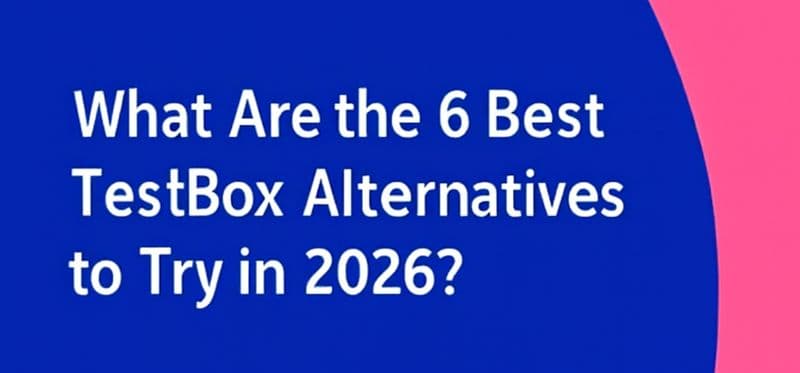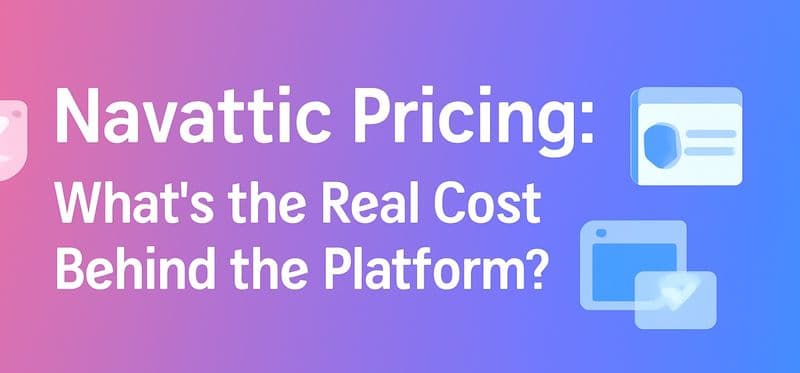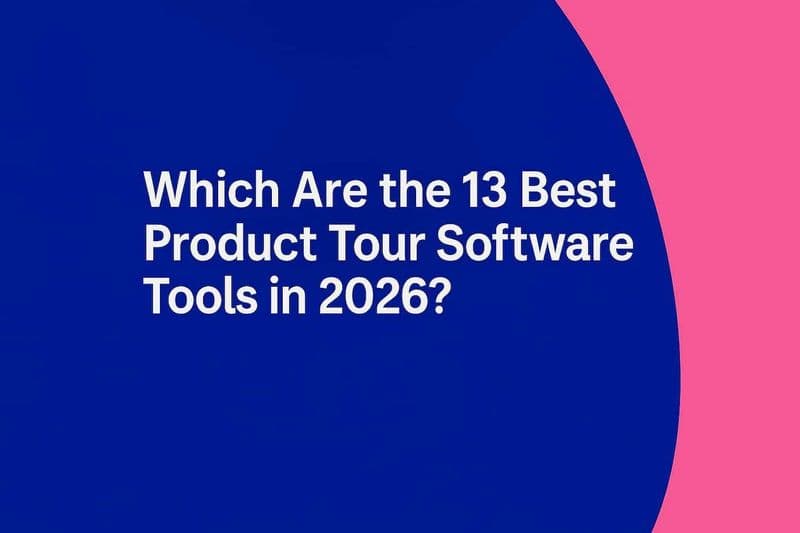
Add Table of Contents
TL;DR
|
Leads are coming in, but conversions? Not so much. You’re running campaigns, testing channels, and pushing content, yet the numbers just don’t reflect the effort. Sound familiar? For many marketers, the real issue isn’t visibility or engagement, it’s building a system that consistently turns interest into opportunities.
If you’re tired of chasing metrics that don’t move the revenue needle, this is for you. In this guide, we’ll break down a practical strategy to help you attract qualified prospects, align better with sales, and build a marketing engine that fuels real business growth. These aren’t high-level theories; they’re proven tactics marketers are using right now to fill their funnel with quality leads and accelerate deal flow.
What is Pipeline Generation?
Marketing isn’t just about creating awareness anymore; it’s about driving revenue. That’s where pipeline generation comes in.
Pipeline generation is the process of identifying, selecting, and guiding high-quality leads through every stage of the sales journey, from first contact to sales-qualified opportunity. It goes beyond surface-level engagement and focuses on creating a consistent flow of prospects who are actually ready to buy.
According to Harvard Business Review, companies with well-defined pipeline generation strategies see 28% higher revenue growth than those without. It’s not just a nice-to-have; it’s your blueprint for predictable, scalable growth.
Which 8 Smart Pipeline Generation Strategies Can Power Your Sales Funnel?
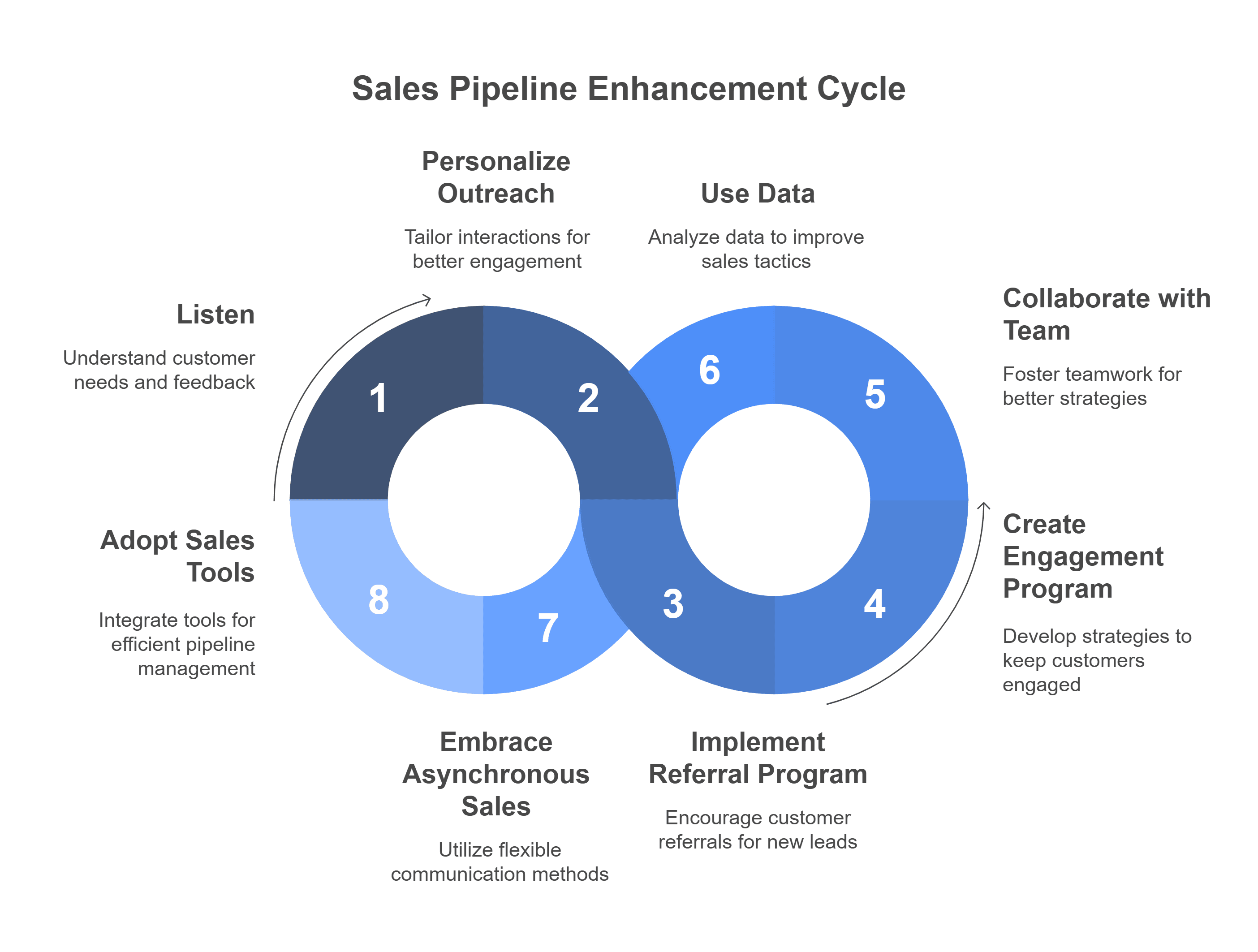
Below, we’ve outlined 8 proven tactics to help you attract qualified leads, improve conversion rates, and build a sales funnel that drives consistent revenue.
1. Are You Listening Like a Strategist or Just Selling?
Actively listening to your prospects isn’t just polite, it’s a competitive advantage. Understanding your buyer's true pain points helps you shape personalized messaging and sharpen your Ideal Customer Profile (ICP).
Did you know? According to HubSpot, 69% of buyers say the most important thing a salesperson can do is listen to their needs.
Use discovery calls, post-demo surveys, and social listening tools like Sprout Social to uncover what your prospects are really saying. The more insights you gather, the better your pipeline quality.
2. How Can Personal and Unexpected Outreach Boost Engagement?
Generic cold emails don’t cut it anymore. Personalized, non-scalable outreach, like a 30-second Loom video, can dramatically boost engagement and trust.
Mention their company’s recent news or LinkedIn activity, and tailor your message to their specific goals.
3. Can Customer Referral Programs Supercharge Your Sales Pipeline?
Referral marketing isn’t just for B2C brands. A smart referral program can transform your customer base into a high-performing sales engine.
Offer exclusive perks, early access, or branded swag as incentives. Companies like Morning Brew use gamified referral systems to generate thousands of qualified leads organically.
4. Is Your Sales Engagement Program Actually Engaging?
Your sales team needs more than scripts; they need strategy. Develop an internal engagement hub with sales decks, objection-handling videos, real-time product updates, and customer-win stories.
Hold monthly skill-building workshops and share top-performing outreach examples to keep reps sharp and your pipeline flowing.
5. How Can Real-Time Collaboration Align Sales and Marketing?
Siloed teams lead to pipeline leaks. Frequent check-ins and shared performance dashboards can align your sales and marketing efforts for smoother handoffs.
Use Slack or Microsoft Teams for real-time feedback and campaign collaboration. Companies with tight alignment see 36% higher customer retention.
Weekly pipeline reviews and content planning meetings ensure everyone’s aiming at the same targets.
6. What’s the Smartest Way to Use Data in Pipeline Generation?
Gut feelings don’t scale, data does. Use tools like Salesforce, HubSpot, or InsightSquared to track lead quality, conversion rates, and campaign performance.
Spot where leads are dropping off, which sources bring in the highest-value deals, and optimize accordingly.
7. Does Asynchronous Selling Reduce No-Shows?
Today’s buyers don’t want endless calls; they want flexibility. Asynchronous selling lets you connect on their terms using tools like Loom, or even personalized landing pages.
A Gartner report found that 33% of all buyers desire a seller-free experience, and async content helps fill that gap while keeping things personal.
Record quick demo recaps or send tailored proposals via video. Prospects can respond when it suits them, reducing no-shows and boosting engagement.
8. Are You Using the Right Sales Tools to Scale Smarter?
From CRMs like Pipedrive to AI-based lead scoring tools like MadKudu, the right tech stack streamlines your outreach, tracks lead interactions, and ensures your team focuses on accounts that matter.
According to Nucleus Research, companies using sales automation tools experience a 14.5% increase in productivity and 12.2% reduction in marketing overhead.
Automate the busywork, score leads by buying intent, and prioritize outreach to build a more sustainable, scalable pipeline.
How Can You Build a Winning Pipeline Generation Strategy?
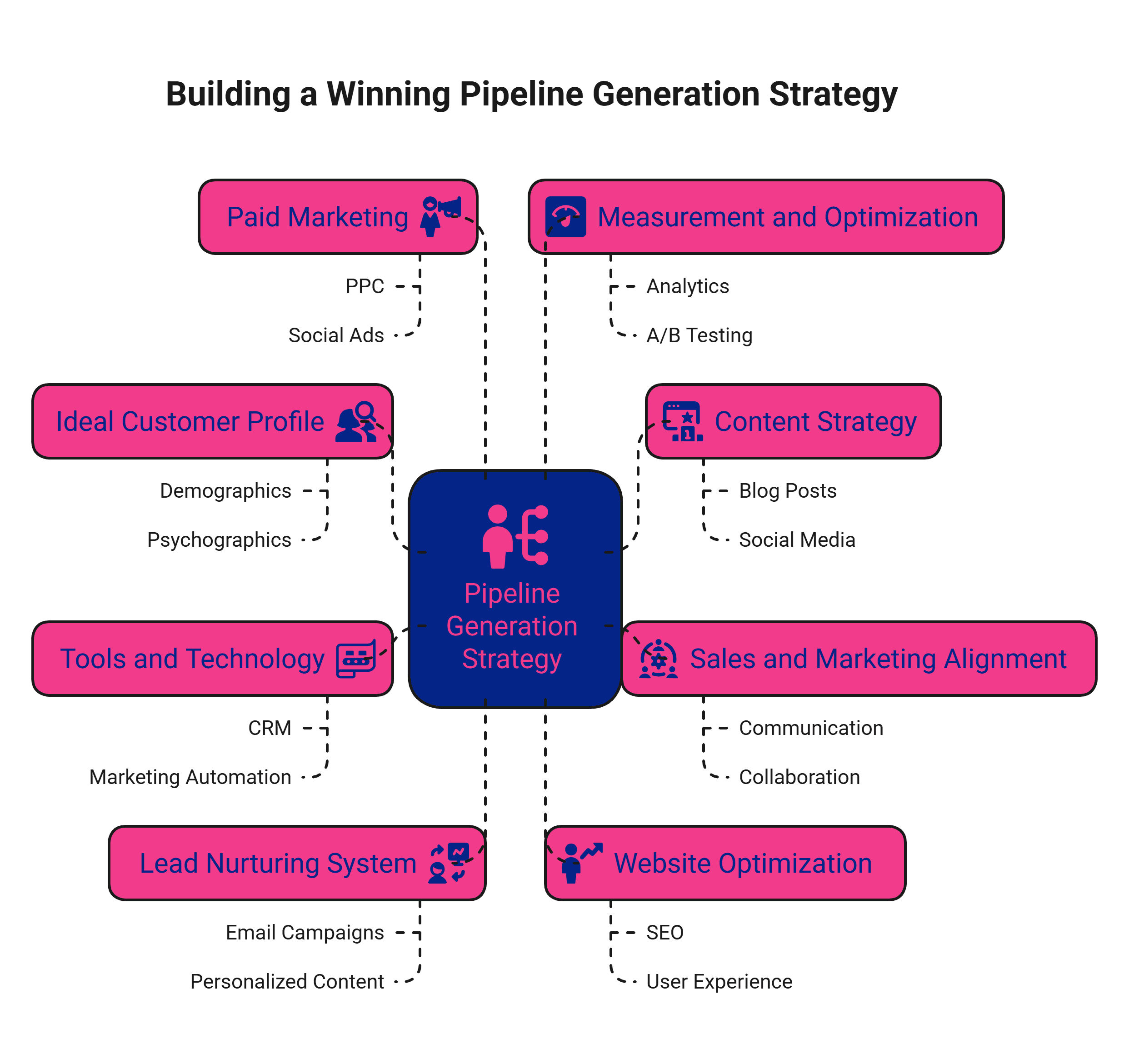
Ready to turn high-level strategy into practical execution? Here are 8 powerful ways to improve your pipeline generation plan and build a lead generation pipeline that consistently delivers results:
1. How Do You Identify Your Ideal Customer Profile (ICP)?
Start by analyzing key data points: demographics, buying behaviors, pain points, and goals. Map these insights into actionable buyer personas. The more precisely you define your ICP, the more effectively you can tailor your messaging, campaigns, and offers to attract sales-ready prospects.
A refined ICP also improves your lead generation pipeline by filtering out unqualified traffic early, saving time, effort, and budget.
2. How Can You Create an Effective Content Strategy for Pipeline Generation?
An effective content strategy is essential for moving leads through your lead generation and pipeline management process. Strategic content doesn’t just inform; it nurtures, qualifies, and guides them through the buying process.
Develop content that answers your prospects’ biggest questions at every stage of the funnel. From SEO-driven blog posts and downloadable whitepapers to customer success stories, use each format to establish authority and trust.
Track engagement metrics like time on page, scroll depth, and content downloads to refine your strategy. Optimizing content for every stage of your lead generation pipeline helps reduce drop-off and increase conversion efficiency.
3. How Can You Align Your Sales and Marketing Teams for Pipeline Success?
A disconnect between sales and marketing can derail even the strongest pipeline generation plan. Alignment ensures both teams are targeting the same accounts and working toward shared revenue goals in their marketing campaigns.
Host regular alignment meetings, use shared KPIs, and invest in tools like HubSpot CRM or Salesforce to centralize lead data. Marketing can pass along sales-qualified leads, while sales provides feedback on lead quality and conversion success.
When both teams are aligned, your lead generation and pipeline management efforts become more cohesive, consistent, and impactful.
4. What Tools Should You Invest in to Support Pipeline Generation?
The right tech stack is critical to supporting a scalable lead generation pipeline. CRMs, automation tools, and lead scoring platforms help you capture, track, and convert leads efficiently.
Use platforms like Salesforce, HubSpot, or Zoho to monitor every touchpoint. Set up lead scoring models based on engagement signals (e.g., email opens, site visits, demo requests) to identify high-potential prospects.
Technology simplifies and strengthens your pipeline generation plan, helping your team spend more time closing and less time chasing.
5. How Do You Establish a Lead Nurturing System That Works?
Lead nurturing is a must-have in any comprehensive lead generation and pipeline generation efforts management strategy. It bridges the gap between initial interest and final purchase.
Set up automated nurturing workflows via email campaigns, retargeting ads, and personalized content. Focus on sending value-driven communications that address specific pain points and highlight relevant solutions.
Integrate lead scoring into your nurturing system so that your sales team can prioritize hot leads while continuing to warm up cold ones. This keeps your lead generation pipeline healthy and active.
6. How Can You Optimize Your Website for Lead Generation?
Your website is your top-performing digital salesperson, but only if optimized properly. A well-optimized site acts as the entry point into your lead generation pipeline.
Implement compelling CTAs, lead capture forms, and interactive content to guide visitors toward conversion. Use customer behavior tracking tools like Hotjar or Google Analytics to understand user intent and identify friction points.
Add chatbots, downloadable resources, and gated content to collect visitor info and push them into your pipeline generation plan.
7. How Can Paid Marketing Help You Gain Pipeline Traction Quickly?
While organic methods are essential, paid marketing can significantly boost visibility and fill your lead generation pipeline faster.
Use LinkedIn Ads, Google Ads, and retargeting campaigns to attract high-intent traffic. Build custom audiences based on your ICP and create ad creatives that speak directly to their needs.
Paid strategies are especially powerful during early stages of your pipeline generation plan, helping you gain momentum while organic channels ramp up.
8. How Do You Measure, Iterate, and Optimize Your Pipeline Generation Strategy?
Even the best pipeline generation strategies need continuous refinement. Set clear KPIs like:
Lead-to-opportunity conversion rate
Customer acquisition cost (CAC)
Pipeline velocity
Deal size
Use dashboards in HubSpot, Salesforce, or Looker to visualize trends and make real-time adjustments.
Treat your lead generation and pipeline management as a living system, analyze, learn, and improve consistently to stay competitive.
What Are the Biggest Pipeline Generation Challenges and How Do You Overcome Them?
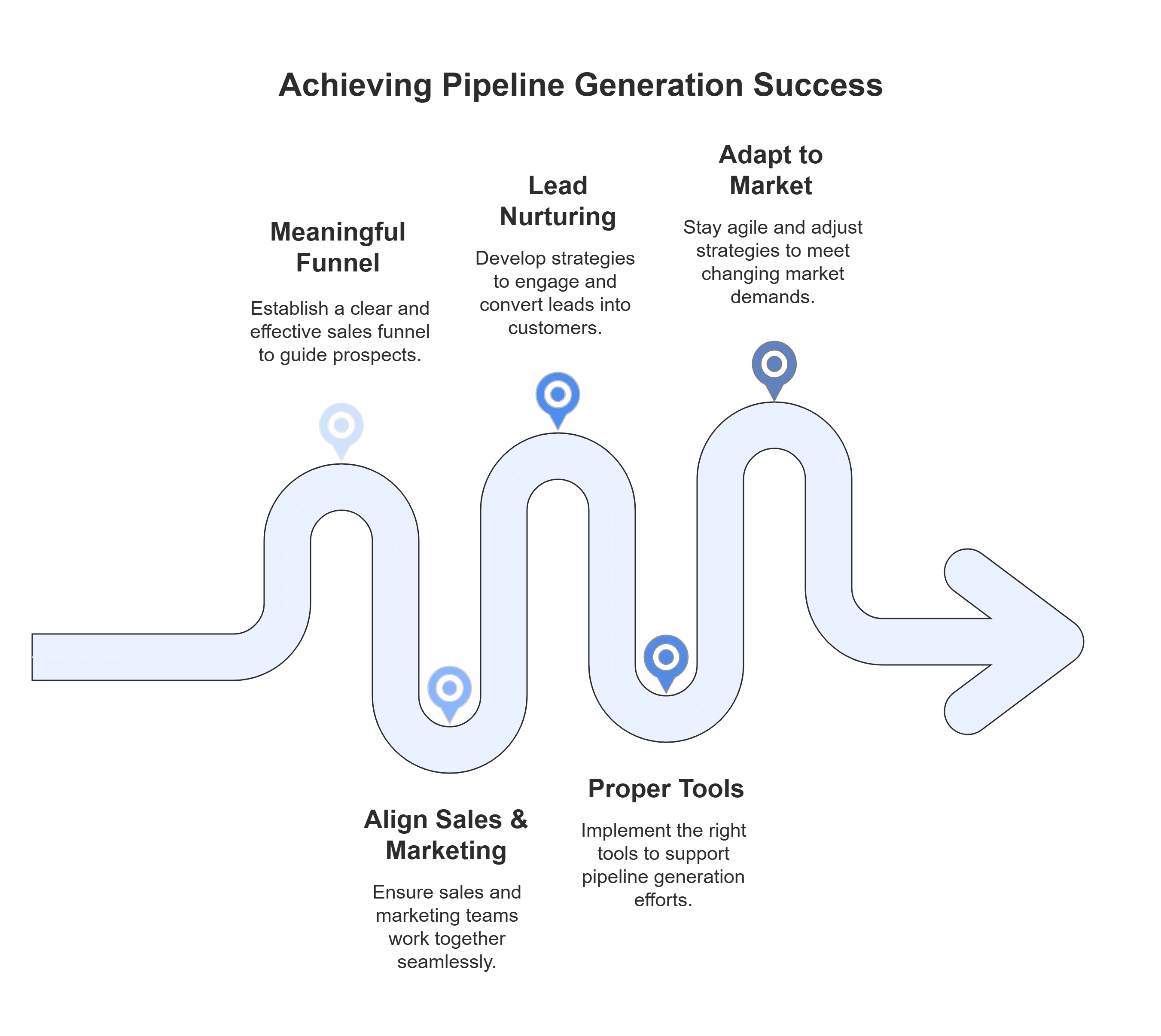
Building a strong sales pipeline is crucial to driving revenue growth, but challenges such as poor lead quality, vague buyer personas, and outdated customer data often hinder progress. To address these issues, marketers require more effective strategies and technology-driven solutions to enhance data quality, increase the number of leads, and improve the likelihood of conversion while expediting responses.
1. What Happens When You’re Missing a Meaningful Sales Funnel?
The problem:
A disorganized or poorly structured sales funnel leads to high drop-off rates and unqualified leads. Without clear stages, your team can’t guide prospects effectively toward a decision.
How to fix it:
Build a sales funnel around the buyer’s journey: Awareness → Consideration → Decision.
Create content tailored to each stage. Use blog posts for awareness, comparisons, and guides for consideration, and case studies to close deals.
Monitor key metrics like drop-off points, conversion rates, and time in each stage to optimize sales performance.
Pro Tip: Long sales cycles? Double down on retargeting and high-value, relevant content to keep leads moving.
2. How Does Misalignment Between Sales and Marketing Hurt Your Pipeline?
The problem:
When sales and marketing don’t align, leads fall through the cracks. Miscommunication delays follow-ups, confuses buyers, and results in wasted effort.
How to fix it:
Set shared revenue goals and define clear MQL-to-SQL handoff processes.
Use collaboration tools like Slack, and integrate a CRM platform (e.g., HubSpot) for real-time visibility.
Hold weekly alignment meetings to review lead quality and campaign performance.
3. Why Does Weak or Inconsistent Lead Nurturing Kill Pipeline Momentum?
The problem:
Even high-quality leads won’t convert without ongoing engagement. Neglected leads quickly grow cold, reducing pipeline velocity and forecasting accuracy.
How to fix it:
Set up automated email nurturing sequences with personalized messaging.
Use lead scoring to prioritize and segment follow-ups.
Mix educational content (like guides) with conversion assets (like product demos or ROI calculators).
Ready to supercharge your lead nurturing through personalized demos? Book a live demo with SmartCue and see how you can engage prospects earlier and move them through your pipeline faster.
4. What’s the Impact of Lacking the Right Tools?
The problem:
Manual tracking, disjointed data, and outdated spreadsheets make pipeline management slow and error-prone.
How to fix it:
Implement CRM and lead tracking tools (e.g., Salesforce, HubSpot, Pipedrive).
Use automation platforms for campaign execution, follow-ups, and data syncing.
Introduce lead scoring systems to ensure reps focus on high-potential opportunities.
5. How Can You Adapt Your Pipeline Strategy to Changing Market Conditions?
The problem:
Outdated messaging, static personas, and rigid campaigns fail to resonate when the market shifts. This stalls your entire lead generation pipeline.
How to fix it:
Update your buyer personas every quarter based on customer interviews and sales feedback.
Monitor competitor messaging and industry trends to stay relevant.
Keep your content calendar flexible, so you can pivot when needed.
Flexibility in pipeline strategies leads to better lead quality and increased close rates over time
Ready to Level Up Your Pipeline Generation Strategy?
If you're serious about building a stronger, more consistent lead generation pipeline, SmartCue can help you get there faster.
With SmartCue, you can:
Build personalized, interactive demos tailored to each prospect
Engage leads earlier and qualify them more effectively
Empower your sales team with tools to close deals quicker and with less friction
Start with a free 14-day trial
No commitment, just measurable results.
Conclusion
A strong and effective lead generation strategy and pipeline generation strategy is the foundation for consistent revenue growth and long-term business success. By understanding the key steps involved, such as identifying your ideal customer, creating effective content, aligning sales and marketing teams, and using the right tools for your lead generation efforts, you can build a pipeline that nurtures relationships, improves lead quality, and boosts conversions.
To overcome common challenges and maintain a healthy pipeline, it’s essential to remain adaptable, closely monitor key metrics, and continually refine your strategy.
Frequently Asked Questions
What is the most effective channel for pipeline generation in the US?
The best pipeline generation strategy in the U.S. uses a mix of content marketing, social media, and email to reach the right audience, build trust, and guide potential leads through the sales funnel effectively.
What are the top metrics to track pipeline health?
Key metrics include conversion rates, sales velocity, win rate, average deal size, and lead-to-opportunity ratios. Tracking these helps spot trends, improve plans, and keep your pipeline healthy and ready for market changes.
What tools are essential for modern pipeline generation?
Some key tools for modern and effective pipeline generation include Customer Relationship Management (CRM) systems, marketing automation software, analytics tools for tracking results, and lead generation platforms. These tools help marketing teams work more effectively by making tasks easier, enabling them to focus on the right people, and facilitating closer collaboration between sales and marketing teams.
What are the benefits of pipeline generation?
An effective pipeline generation strategy ensures a steady flow of leads, improves sales forecasting, and helps identify sales opportunities at the right time. It’s the best way to boost future revenue, enhance customer experience, and achieve higher conversion rates.
How does pipeline generation differ from lead generation?
Pipeline generation focuses on guiding potential leads through the sales process toward future sales, while lead generation is the first step, capturing interest (like an email address). Pipeline generation aligns with buyer behaviors to drive higher conversions.
